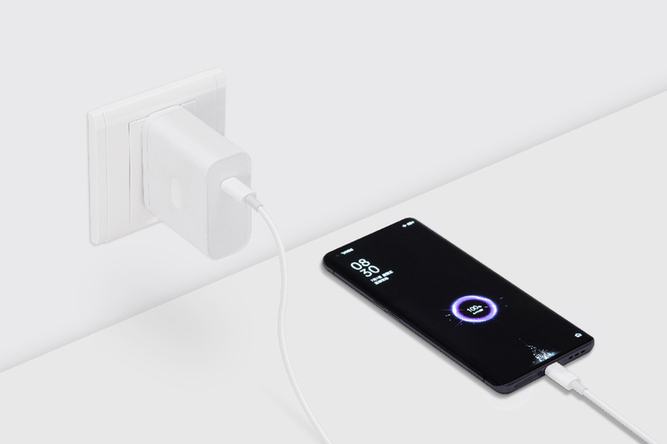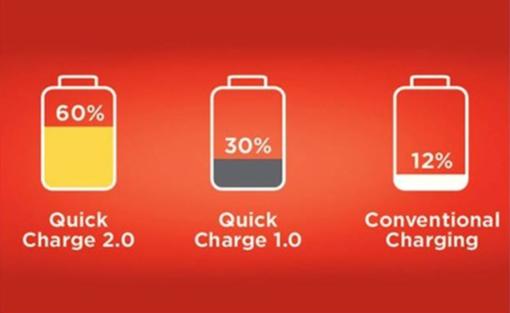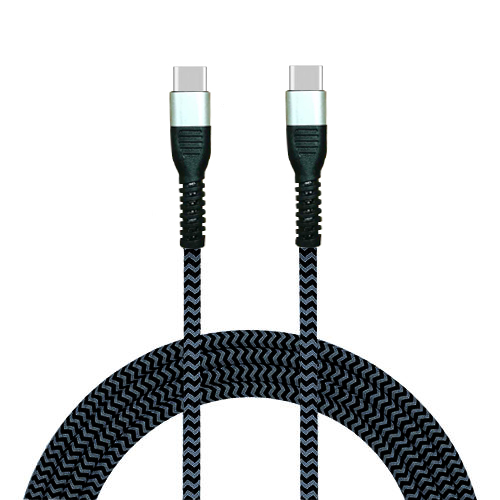Fast charging technology breaks through one hundred watts, industry standard formulation has become the focus
From 18W to 125W, it only took two years. In order not to spend more waiting time on charging, the "radical" of Chinese mobile phone manufacturers appears to be extremely synchronized with the development of the communications era.

Back in February 2019, Lei Jun, the founder and chairman of Xiaomi Technology, threw the concept of 100W fast charging on Weibo. This is no different from a blockbuster in the era of 50W mobile phone charging power, but it is trapped by special adapters and The commercial use of 100W fast charging has been temporarily shelved for issues such as battery loss and heat generation, but the research and development of fast charging technology has not stopped, and the development speed has far exceeded people's estimates. On July 13, iQOO released FlashCharge 120W ultra-fast flash charging technology. Two days later, OPPO superVOOC 125W super flash charging technology, and Xiaomi’s 100W fast charging source adapter has also obtained 3C certification. It is expected that 100W fast charging technology will also be launched in August. This is how domestic head manufacturers are speeding up fast charging technology. Up. In the era when Samsung, Apple and other manufacturers still use 25W and 18W charging technology, Chinese mobile phone companies with more than 100W fast charging have successively launched, allowing the public to see the domestic mobile phone market’s research and development capabilities in vertical fields. The fast charging technology competition is becoming more and more fierce. Further promote the development of the mobile phone industry.
Breakthrough-the origin of fast charging

Why can charging technology reach more than 100W? This starts from the origin of fast charging technology. In 2013, chip supplier Qualcomm first proposed the concept of "fast charge", and Quick Charge 1.0 was born. From the charging formula [P (power) = U (voltage) × I (current)], Quick Charge 1.0 improves the charging efficiency by increasing the input current. It supports 5V/2A, that is, the maximum charging power of 10W, breaking through the USB- IF agrees on the 1.5A current upper limit of USB Battery Charge 1.2.
In 2014, trapped in the background of MicroUSB 2.0 with a maximum current of 2A, Qualcomm overturned the Quick Charge 1.0 strategy and adopted a high-voltage fast charging solution. By increasing the voltage and increasing the charging speed, Qualcomm launched Quick Charge 2.0. . At this time, OPPO also innovatively introduced a VOOC flash charging solution. By changing the electric shock and internal lines in the MicroUSB data cable, the circuit was reconstructed from scratch, and the special OPPO data cable was manufactured to achieve the effect of fast charging. Although the charging speed is accelerating, it still suffers from high manufacturing costs and reduced battery life. Fortunately, the first generation of VOOC relied on the 5V/5A 25W super power, so that OPPO mobile phones can be extremely fast in charging speed, making other mobile phones difficult to beat. The most classic advertising slogan "charge for five minutes, talk for two hours" is also the same. Come.
High-voltage fast charging led by Qualcomm QC2.0 and low-voltage high-current fast charging led by OPPO VOOC greatly improved the charging speed. However, due to the problem of the micro USB interface, they were not quickly promoted. The era of fast charging is really coming from the launch of Type-C data cable. With support for positive and negative plug compatibility, compatible with USB 3.1 standard, support for the fastest 10Gbit/s transmission and USB Power Delivery charging protocol, the maximum support 5A current, 100W power, etc. Advantages and accelerated the development of fast charging technology, including MediaTek Pump Express (PE), Meizu mCharge and Pump Express Plus (PEP), Huawei’s early Fast Charge Protocol (fsp) and other fast charging technologies are all high-voltage fast charging solutions that emerged during this period; However, because of the high cost of low-voltage and high-current, there is no high-voltage fast charging solution that is sought after.
By 2016, as Android phones began to fully adopt Type-C interfaces, various mobile phone manufacturers began to use low-voltage and high-current fast charging solutions. Huawei is compatible with PD and Qualcomm QC protocol SuperCharge (SCP), MediaTek Pump Express 3.0, and Meizu Super mCharge Fast charging solutions such as mCharge4.0 and so on are produced. Qualcomm also discovered the advantages of the low-voltage solution, adding low-voltage and high-current to the QC4.0 fast charge protocol, that is, it supports both the high-voltage fast-charging solution and the low-voltage and high-current solution.
Innovation-further improvement of fast charging technology
From a technical point of view, both the OPPO super flash charging technology and the iQOO super fast flash charging technology use a charge pump scheme. The 125W super flash technology uses a parallel three charge pump scheme with a conversion efficiency of 98%. The principle is the output of the charger. The 20V 6.25A power is converted into 10V 12.5A through three parallel charge pumps and then enters the battery. Each charge pump only needs to convert 20V 2.1A about 42W of power, which effectively avoids the overload and overheating of the charge pump caused by high current. The iQOO 120W FlashCharge ultra-fast flash charging technology uses a "dual-cell series" battery solution with a conversion efficiency of 97%. After entering the mobile phone through a 20V 6A charger, it is divided into dual 20V 3A and each uses a charge pump. The divided voltage output is 10V 6A, and finally combined into 10V 12A to charge the two strings of batteries directly.
Charge pump fast charging technology is simply to use a unique "half voltage scheme" to convert high voltage and low current signals into low voltage and high current signals, which are then sent to the battery, thereby realizing fast charging with high voltage direct charging. The higher the efficiency, the lower the charger temperature can be controlled. The charger temperature determines the running time of fast charging under high power. In fact, charge pumps are not uncommon in fast charging technology, and many fast charging on the market use this technology.
iQOO 120W FlashCharge ultra-fast flash charging technology first released 6C batteries, which can convert 20V 6A into 5V 12A current; and OPPO 125W ultra-flash technology input current has increased from 6.5A to 12.5A from the previous generation SuperVOOC, battery specifications need to be upgraded To dual 6C batteries with higher charge and discharge rates, the battery technology is upgraded from MMT to MTW. Since each layer of the battery has positive and negative electrodes, the path of charge movement is Times shorter, the cell impedance is further reduced, effectively reducing the heat generated when the battery is charging,
In addition, on the basis of the original 4 temperature sensors (3 mobile phones and 1 charger), OPPO has added 10 temperature sensors on the mobile phone to monitor the charging situation in real time, providing far more temperature monitoring strength than before, even if it is Charging while playing games, you can also quickly adjust the charging power in real time. The maximum temperature of the body during charging is controlled within 40°C to reduce heat generation and avoid abnormal charging. The iQOO charger has two temperature sensors inside, which can be passed through the data cable. The charger temperature information is transmitted to the mobile phone, and the charging power is controlled by the temperature to ensure the safe and low temperature of the mobile phone during use.
Compatible-fast charging industry standards are just around the corner

Whether it is OPPO and iQOO, which have just released new fast charging technologies, or mobile phone companies that are about to launch high-power fast charging, faster and faster charging speeds have become the future development trend, and people will pay more attention to safety issues during charging. Although all type-c charging cables are used, because the charging heads, charging cables, and supporting charging protocols of each manufacturer are different, if the three cannot be matched at the same time, even if the fast charging and the correct USB data cable are purchased, they can only When used as an ordinary charger. When the fast charging can be opened up, a charging head or a set of fast charging solutions can adapt to different brands has become the most concerned issue.
As the creator of fast charging technology for low-voltage and high-current mobile phones, OPPO has also been working hard to promote the process of compatible agreements and actively participating in the formulation of fast-charging industry standards. Zhang Jialiang, chief scientist of OPPO’s flash charging, said in an interview, “As the power gradually increases, the basic threshold for fast charging will become higher and higher, but compatibility is a major trend in the future. A unified fast charging industry standard will make it more convenient for consumers. It also contributes to energy conservation and emission reduction. This is OPPO’s demand and I believe compatibility is just around the corner."
In order to avoid security problems, OPPO has introduced a 128-bit exclusive encryption algorithm to fully reduce security risks. Only when the encrypted information of the E-marker cable is recognized, the charging current can reach 6.25A, which effectively reduces the cost of different charging protocols, charging heads and charging cables. Security issues that arise.
5G brings richer scenarios for the integration of everything and multiple scenarios, which also greatly increases the output demand for energy consumption, and puts forward new requirements for the battery life and charging of mobile phones. Faster charging will become the development of the mobile phone industry. The mainstream trend is that the time when it took a long time to fill the mobile phone is over. It will become a reality to wash and charge for ten minutes. In the 5G era, mobile phone manufacturers will face more opportunities and challenges at the same time. In order to avoid homogeneity, innovation will become the focus of their efforts.



